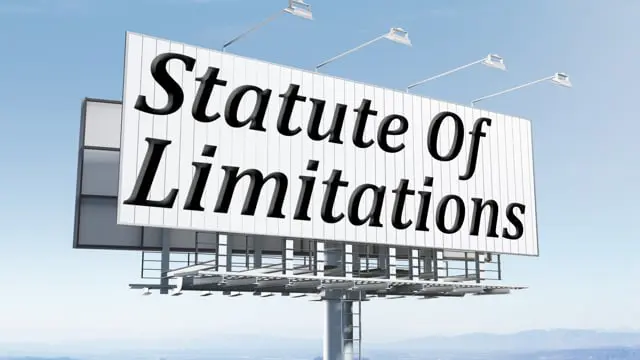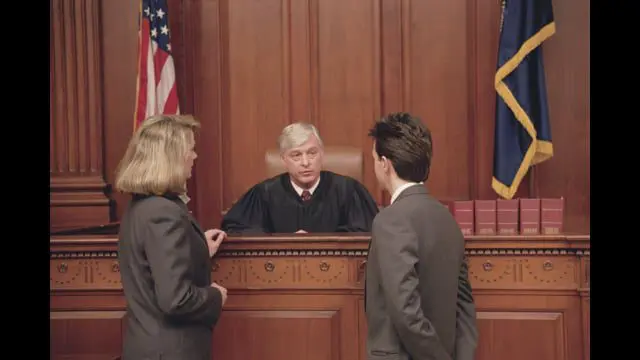El paisaje de housing law y affordable housing initiatives in the United States is marked by complex challenges and evolving legal frameworks aimed at addressing the persistent shortage of accessible, low-cost housing options. As the nation grapples with rising housing costs and widening income disparities, policymakers, profesionales del derecho, and housing advocates are confronting a multifaceted crisis that intersects with issues of racial equity, economic opportunity, and community development.
At the heart of this crisis lies the fundamental tension between the need for affordable housing and the various legal and regulatory barriers that often impede its development. Zoning laws, historically used as tools for racial and economic segregation, continue to play a significant role in shaping the availability and distribution of affordable housing. Many municipalities maintain restrictive zoning ordinances that favor single-family homes and low-density development, effectively limiting the construction of multi-family units and other affordable housing types.
En Fair Housing Act (FHA), enacted in 1968 as part of the Civil Rights Act, remains a cornerstone of federal housing law. This legislation prohibits discrimination in housing based on race, color, national origin, religion, sex, familial status, and disability. However, the implementation and enforcement of the FHA continue to face challenges, particularly in addressing more subtle forms of discrimination and the lingering effects of historical segregation patterns.
One key issue in contemporary housing law is the concept of disparate impact, which allows for legal challenges to policies that, while facially neutral, have a disproportionate adverse effect on protected groups. The application of disparate impact theory to housing policies has been the subject of ongoing legal debate and regulatory changes. Recent court decisions and administrative actions have sought to clarify the standards for bringing disparate impact claims, with implications for a wide range of housing practices, from tenant screening procedures to municipal zoning decisions.
En Low-Income Housing Tax Credit (LIHTC) program, established by the Tax Reform Act of 1986, has become the primary federal mechanism for incentivizing the development of affordable rental housing. This program provides tax credits to developers who construct or rehabilitate affordable housing units. While the LIHTC has been instrumental in creating hundreds of thousands of affordable units, critics argue that it has not adequately addressed the needs of extremely low-income households and has sometimes reinforced patterns of racial and economic segregation.
In recent years, there has been a growing focus on inclusionary zoning policies as a tool for promoting affordable housing development. These policies typically require or incentivize developers to include a certain percentage of affordable units in new residential projects. While inclusionary zoning has gained traction in many jurisdictions, its implementation has faced legal challenges, particularly in states where local governments’ authority to mandate affordable housing is limited by state law.
The issue of rent control remains a contentious topic in housing law and policy. Proponents argue that rent control is necessary to protect tenants from rapid rent increases and displacement, particularly in high-cost urban areas. Opponents contend that rent control can discourage new housing construction and lead to deterioration of existing housing stock. The legal landscape surrounding rent control varies significantly by state, with some jurisdictions prohibiting or severely restricting such measures, while others grant municipalities broad authority to implement rent regulations.
En Housing Choice Voucher Program, commonly known as Section 8, is a major federal initiative aimed at providing rental assistance to low-income households. However, the program faces ongoing challenges, including discrimination against voucher holders and a shortage of landlords willing to participate. Some jurisdictions have enacted laws prohibiting source-of-income discrimination to address this issue, but enforcement remains a challenge.
En Community Reinvestment Act (CRA), enacted in 1977, continues to play a role in affordable housing initiatives by encouraging financial institutions to meet the credit needs of all segments of their communities, including low- and moderate-income neighborhoods. Recent proposals to modernize the CRA have sought to clarify and strengthen its application to affordable housing development and community investment.
Eviction prevention has emerged as a critical focus of housing law and policy, particularly in light of the economic disruptions caused by the COVID-19 pandemic. Temporary eviction moratoriums implemented during the pandemic have sparked legal debates about the extent of government authority to intervene in landlord-tenant relationships during emergencies. As these temporary measures expire, policymakers are grappling with how to address the ongoing housing instability faced by many low-income renters.
El concepto de right to counsel in housing court has gained traction in several jurisdictions as a means of addressing the power imbalance between landlords and tenants in eviction proceedings. Cities like New York and San Francisco have implemented programs providing free legal representation to low-income tenants facing eviction, with early data suggesting positive outcomes in terms of housing stability.
Environmental justice considerations are increasingly intersecting with affordable housing initiatives. The siting of affordable housing developments must navigate complex environmental regulations while also addressing concerns about exposure to environmental hazards that disproportionately affect low-income communities and communities of color.
En Affirmatively Furthering Fair Housing (AFFH) rule, introduced by the Department of Housing and Urban Development (HUD) in 2015, represents an attempt to strengthen the FHA’s mandate to actively promote integration and equal housing opportunity. The implementation of this rule has been subject to political fluctuations, with recent administrations taking differing approaches to its enforcement and interpretation.
Public housing remains a critical component of the affordable housing landscape, but faces significant challenges related to aging infrastructure, inadequate funding for maintenance and repairs, and shifting policy priorities. The Rental Assistance Demonstration (RAD) program, introduced in 2012, aims to address some of these issues by allowing public housing authorities to convert units to project-based Section 8 contracts, enabling access to private capital for renovations and improvements.
En Housing Trust Fund, established by the Housing and Economic Recovery Act of 2008, provides grants to states for the production, preservation, and rehabilitation of affordable housing for extremely low-income households. While this program has expanded the resources available for affordable housing development, its impact has been limited by funding constraints and implementation challenges at the state level.
Transit-oriented development (TOD) has emerged as a strategy for combining affordable housing initiatives with sustainable urban planning. Many jurisdictions are exploring ways to leverage public transit investments to create mixed-income, mixed-use developments that provide affordable housing options with access to transportation and employment opportunities. However, these efforts must navigate complex legal and regulatory frameworks governing land use, transportation planning, and affordable housing requirements.
El papel de technology in housing law and affordable housing initiatives is evolving rapidly. Issues such as algorithmic bias in tenant screening processes, the use of artificial intelligence in property management, and the impact of short-term rental platforms on housing markets are presenting new legal and regulatory challenges. Policymakers and legal professionals are grappling with how to apply existing fair housing and consumer protection laws to these emerging technologies while also considering the need for new regulatory frameworks.
Homelessness prevention y rapid rehousing programs have gained prominence as key components of comprehensive affordable housing strategies. These initiatives often involve complex legal and policy considerations, including the rights of individuals experiencing homelessness, the use of public spaces, and the coordination of social services with housing assistance.
En preservation of existing affordable housing stock has become a critical focus, particularly in areas experiencing rapid gentrification and development pressure. Legal tools such as deed restrictions, community land trusts, and right of first refusal policies are being employed to maintain long-term affordability in changing neighborhoods.
Accessory dwelling units (ADUs) have gained attention as a potential strategy for increasing affordable housing options within existing residential neighborhoods. Many jurisdictions are revising zoning codes to allow for the construction of ADUs, but these efforts often face legal challenges and community opposition.
La intersección de housing law y healthcare policy is receiving increased attention, particularly in light of research demonstrating the profound impact of housing stability on health outcomes. Some jurisdictions are exploring innovative legal and policy approaches to integrate affordable housing with healthcare delivery, such as medical-legal partnerships and housing-based health interventions.
Energy efficiency y sostenibilidad requirements are becoming more prominent in affordable housing development, driven by both environmental concerns and the need to reduce long-term operating costs for low-income residents. These initiatives must navigate complex regulatory frameworks governing building codes, energy standards, and environmental impact assessments.
El papel de state preemption in housing law has become a contentious issue, with some states enacting legislation to limit local governments’ authority to implement certain affordable housing policies, such as inclusionary zoning or rent control. These preemption laws have sparked legal battles over the balance of power between state and local governments in addressing housing affordability.
Fair chance housing laws, which limit landlords’ ability to consider criminal history in tenant screening, have been enacted in several jurisdictions as a means of reducing barriers to housing for individuals with criminal records. These laws raise complex legal questions about the balance between fair housing goals and property owners’ rights to screen tenants.
En financialization of housing, including the growing role of large institutional investors in the rental market, presents new challenges for affordable housing policy and regulation. Policymakers are exploring legal and regulatory approaches to address concerns about the impact of these trends on housing affordability and community stability.
Climate change y natural disaster resilience are increasingly factoring into affordable housing initiatives, particularly in vulnerable coastal and urban areas. Legal frameworks governing disaster recovery funding, insurance requirements, and building standards are evolving to address the unique challenges faced by low-income communities in adapting to climate risks.
En intersection of immigration policy and housing rights continues to be a complex and evolving area of law. Issues such as access to federally subsidized housing for mixed-status families and the rights of undocumented immigrants in private rental markets present ongoing legal and policy challenges.
Cooperative housing and other alternative ownership models are gaining attention as potential strategies for expanding affordable homeownership opportunities. These models often require navigating complex legal frameworks governing property ownership, financing, and governance structures.
En rights of manufactured housing residents have become a focus of defensa jurídica and policy reform efforts, particularly as these communities face increasing pressure from development and changing land use patterns. Issues such as lot rent stabilization, community ownership models, and relocation assistance are being addressed through both legislation and litigation.
As the landscape of housing law and affordable housing initiatives continues to evolve, profesionales del derecho, policymakers, and advocates must navigate an increasingly complex web of federal, state, and local regulations. The ongoing challenge lies in balancing the urgent need for affordable housing with competing interests, constitutional protections, and the diverse needs of communities across the nation. Addressing these key issues will require innovative legal strategies, sustained policy commitment, and a willingness to confront the deep-rooted systemic barriers that have long shaped the American housing landscape.
Website citations:
- https://nlihc.org/sites/default/files/housed_Key-Legislation.pdf
- https://www.gao.gov/affordable-housing
- https://www.advancingjustice-aajc.org/press-release/historic-legal-battle-unveiled-against-discriminatory-florida-housing-law-sb-264
- https://www.neighborgoodpartners.org/post/navigating-the-future-affordable-housing-trends-in-2024
- https://www.bdcnetwork.com/home/news/55165861/top-10-trends-in-affordable-housing
- https://penniur.upenn.edu/publications/universities-and-affordable-housing-seven-case-studies
- https://housing2justice.enterprisecommunity.org/legal-framework
- https://blog.naiop.org/2024/08/a-milestone-for-affordable-housing-naiop-hawaiis-first-authored-legislation-becomes-state-law/
- https://harvardlawreview.org/print/vol-135/addressing-challenges-to-affordable-housing-in-land-use-law/
- https://www.gao.gov/blog/affordable-housing-crisis-grows-while-efforts-increase-supply-fall-short








